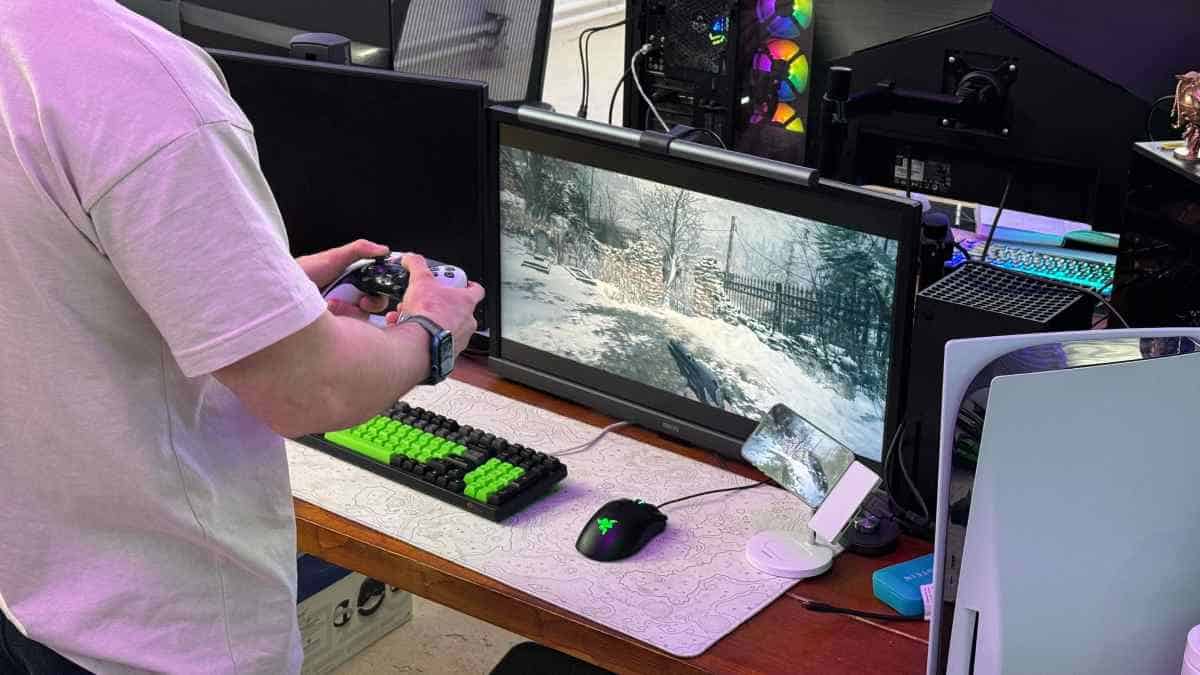Video Gamer is reader-supported. When you buy through links on our site, we may earn an affiliate commission. Prices subject to change. Learn more
The latest financial report from Nintendo reveals a whole lot of information on the Switch, and in part, its successor.
It touches on how Tears of the Kingdom “proved to be a catalyst for highlighting the presence of Nintendo Switch” with a sell-through of 17.6 million units. Alongside that, it’s highlighted how this year has had 117m annual playing users – the largest since the console’s release – showing off that the Nintendo Switch is not dead yet.
Nintendo’s vehement defence of the Switch might read as denial of the Switch 2’s development – it’s celebrating its eight year, new titles are scheduled for release and they’re going to maintain and expand user engagement beyond current growth. It sounds as though we’re going to be sat with the 2017 console for the foreseeable future, right?
We don’t necessarily think so
Nintendo isn’t necessarily known for abandoning its hardware without giving it time to gently approach its last breath. It had three mainline consoles concurrently in production at the same time in 2017 – the 3DS, Wii U, and the Nintendo Switch. The 3DS and Wii U were both reaching the end of their lifelines, yet still received major game launches until the very end. Breath of the Wild on the Wii U and Pokemon Ultra Moon and Ultra Sun on 3DS, for example. In fact, the 3DS had a nine-year run on the production line, having only been discontinued in 2020.
The Nintendo Switch is now fast approaching its eighth year of production and despite updated models such as the Lite and OLED, the cracks are beginning to show. Shin Megami Tensei V, for example, released in late 2021. It’s a pretty game, but shouldn’t be demanding or technically taxing on modern hardware. Still, frequent frame-rate drops, landscapes restricted by rendering issues and jerky animations soured the launch of a game that could have been perfect. Bayonetta 3 and the latest Pokemon franchise entries have also been hampered by the limitations of the Nintendo Switch’s hardware: “Marred by polish and performance issues,” reads Eurogamer’s Bayonetta 3 review, while our own thoughts on whether or not Pokemon Scarlet and Violet is worth it notes the game as “graphically intensive.”
The scope of the Nintendo Switch is pretty limited. Even Tears of the Kingdom struggled to maintain a steady 30 FPS which wouldn’t have been an issue had the console been a little beefier. It currently runs with a Tegra X1 chip from 2015 with a 20nm die size. In comparison, a Snapdragon 8+ Gen 1 APU features a 4nm die size and can run Call of Duty: Mobile consistently at 60 FPS on a phone. Nintendo’s flagship handheld is currently severely outperformed by smartphones and, though the figures prove that this isn’t a problem for the company’s finances, it could very well drive developers away from committing to the console.
As a side-note, the Snapdragon 8+ Gen 1 APU isn’t even the most powerful mobile chip out there. Shown above by Digital Foundry, the Apple A17 Pro Bionic Chip runs Resident Evil Village between 26 – 30 FPS at 900p (the Switch’s target resolution) and it looks fantastic. Assassins Creed Mirage is also set to release later on iOS early next year while the Nintendo Switch is stuck with Mortal Kombat 1’s “badly textured character models.“

We decided to hook up our iPhone 15 Pro Max to a monitor, rig up a PS5 controller and start playing Resident Evil Village. You have a bit of warping as it’s output at 900p, but it doesn’t look half-bad, does it?
Even if Nintendo’s latest financial report doesn’t suggest it’s worried about the flagship consoles’ market performance, they’re not going to ignore that there’s a specific need for a new console. There’s talks that the Nintendo Switch 2 was showcased at Gamescom, and Eurogamer’s Richard Leadbetter has recently uncovered rumours that it’s going to feature a custom Nvidia T239 processor – a notable upgrade over the Tegra X1.
While it might look likely that there’s a new console in the works, Nintendo’s boss Shintaro Furukawa has denied reports that it briefed game developers as “untrue,” via Japanese publisher Mainichi. Furukawa also addresses a patent filed for a dual-screened gaming handheld, dismissing them as a mere placeholder.

If Nintendo is indeed developing new consoles, its trying hard to keep schtum about it. Perhaps it’s a sneaky tactic to drive sales towards the current Nintendo Switch models, but the evidence tells us that we’re going to see games launching on the console lineup for a while longer. This doesn’t rule out the fact that a new system could get released eventually, and even if it does, we’ll see the Nintendo Switch supported after that.
Source: Nintendo
